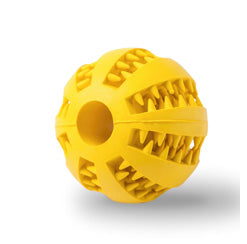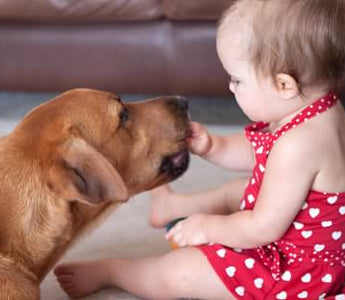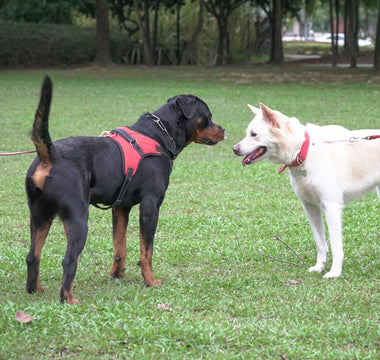Do you live alone, or do you live with other family members? The dynamics can vary significantly when it comes to introducing dogs into a family setting. Some dogs have had experience living in a family, while others may not have had that opportunity. Factors like previous living conditions and reasons for rehoming can also influence their behavior and reactions. On the other hand, you might be starting fresh with a brand-new puppy, a clean slate in terms of their interactions with humans. Regardless of your specific situation, the ultimate goal is to create a happy family unit that includes your furry friends.
The temperament of your dog plays a crucial role in this process. It's essential to assess whether your dog is generally laid back, happy-go-lucky, and comfortable around new people or if they have ever displayed signs of aggression or discomfort when in the presence of kids or babies. The best starting point for introductions is when your dog is calm, and it's equally important for your children to be in a calm state during these initial interactions.
A fundamental aspect of ensuring a smooth transition is proper dog training. It's important to evaluate whether your dog responds to basic commands like "sit," "stay," and "leave it." While some dog owners can manage training on their own, others may require the assistance of professional trainers. It's advisable to research and find a suitable place that offers dog obedience training, benefiting both your dog and the entire family. This training will be particularly helpful in maintaining control during introductions.
Always remember that introductions should be supervised closely. It's ideal if your children have been educated on how to treat and respect dogs. This includes not pulling tails, ears, teasing, poking their eyes, or invading their personal space, especially during mealtimes. Depending on your dog's temperament, having them on a leash and harness during introductions may be a wise precaution.
Introducing your dog to a new baby should be a gradual process. Familiarize your dog with the sounds, the word "baby," and the scent of a baby. Well before the baby's arrival, get your dog acquainted with the nursery. During this transition, it's essential to keep a watchful eye on any interactions between your new family members.
Just as humans should respect the boundaries of their canine companions, dogs should also understand the boundaries set by their human families. If you're using baby gates, make sure your dog comprehends that they must not jump over them.
Sticking to your existing routines with your dog as much as possible is another key element. If you have set times for daily walks, strive to maintain that schedule. While babies inevitably require more attention, it's vital to continue giving your dog the affection and care they're accustomed to. They should feel just as cherished after the baby's arrival as they did before.
Once your dog is adapting well to the introductions and interactions, reward them with praise and treats to reinforce positive behavior. If an introduction becomes too stressful, it's perfectly fine to try again later.
Ultimately, the goal is to create one big, happy family. With patience, time, and grace, this goal is entirely achievable. Here's to many happy, joyous, and memorable moments with your new family!













